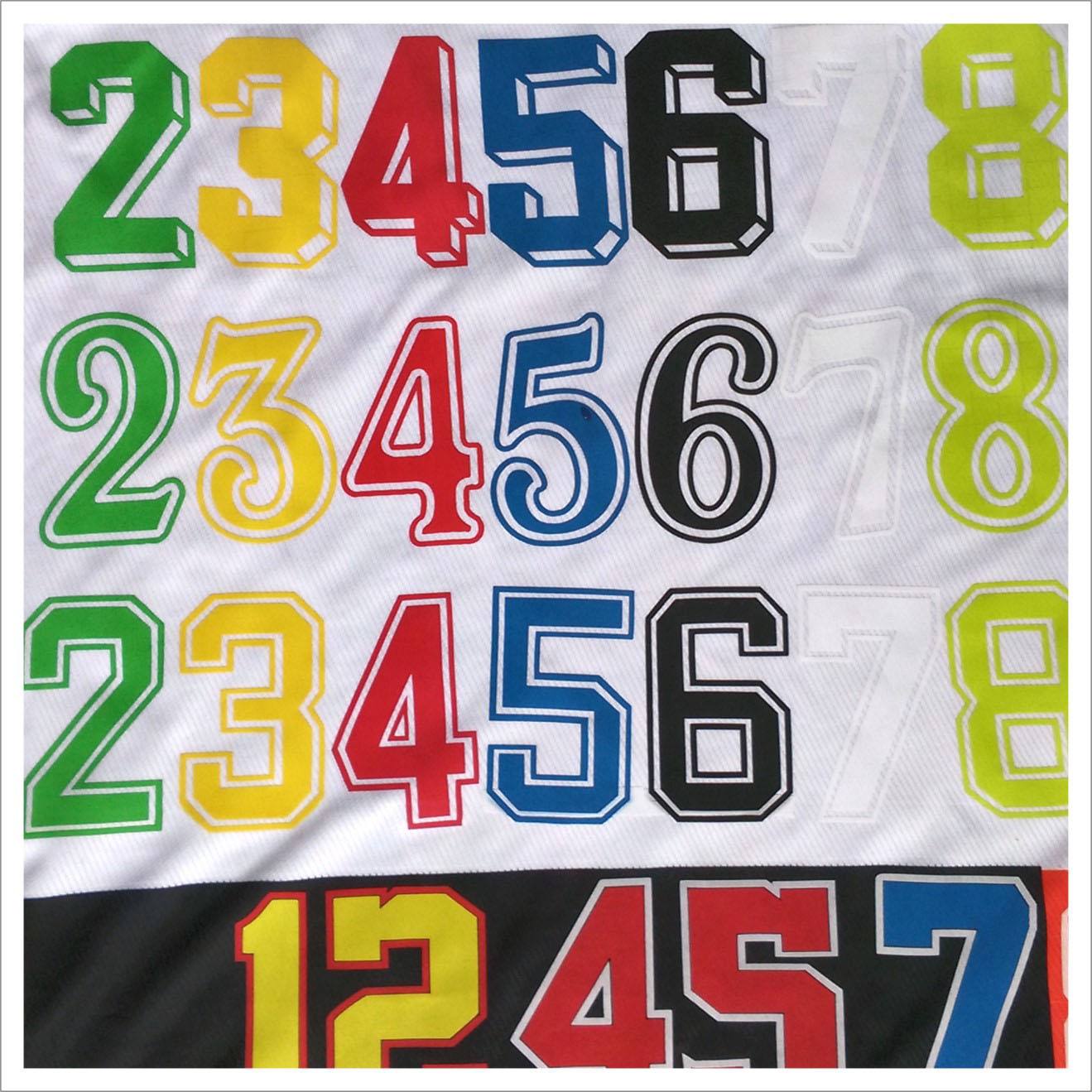1.1 Goalkeeper number No. 1 is usually the main goalkeeperFootball number, No. 12 is the substitute goalkeeper 2 and the core number No. 9 represents the main strikerFootball number, No. 10 is the core playerFootball numberFor example, Riccole Mediego and other three winger wingers numbers 7 and 11 are usually assigned to winger or wingers 4 back back numbers 6 and 8 are the main backfielders 5 back numbers 2, 3, 4 and 5 are the main backfielders 6 special significanceFootball numberSome of the numbers correspond to the player's year of birth.
2. No. 14 If there is another number shining brightest 111 jersey behind it, it must be No. 14, the special Dutch star Cruyff, choosing this day to commemorateFootball numberHe started playing football at the age of 14. Many substitutes for No. 15 wore this number before the start of the game. Baggio wore it as a teenager in the 1990s and almost single-handedly brought Italy to the semi-finals. No. 16 Many players like this number, mainly midfield.
No. 3 and No. 15 represent the number they want. Many substitute players wear this number before becoming the main force. No. 16 is a lucky number. Many players like to choose it. Most of the positions are in the midfield No. 17 French legendary striker Fontaine once wore this number. Since then, this number has become popular. No. 18 strikers and attacking midfielders often choose this number. Germany's "Golden Bomber" Klinsmann once wore No. 19 as a backup for a powerful attacking midfielder or striker.
4.1 Goalkeepers usually wear No. 1 jersey, which symbolizes the stability of the team's defense. 2No. 2 jersey is usually the choice of right-back, and legendary players like Cafu prefer this number.3 In Europe, No. 3 jersey is usually the symbol of left-back, while in South America, it is sometimes assigned to players who are not full-time left-back. 4No. 4 jersey may serve as right-back or midfield defensive midfield in different tactical systems55.
The football numbers from 5, 1 to 30 usually represent different positions on the football field. The No. 1 goalkeeper, which is the number plate of the goalkeeper. It is the number plate of the right-back No. 2, the last line of defense of the team. The number 3 is usually the number plate of the defender. According to European tradition, No. 3 is mostly the left-back, but it varies in different regions. No. 4 represents a defensive player and usually shows a brave and courageous character.
6.1 Football jersey numbers are usually set between 1 and 99. This range applies to most games. 2 In international competitions such as the World Cup and the European Cup, the jersey numbers of national team players are usually limited to numbers 1 to 23. 3 In informal games or second-tier games, jersey numbers exceeding number 23 may appear. 4 Big numbers are usually assigned to young players in the second team or players in the reserve team as their first team.
The number of No. 7 and No. 11 left midfielder and left winger sometimes often appears on the striker. Player No. 11 exists as a surprise soldier. He usually moves on the left. He can be a winger, a left midfielder, or a second striker. The common characteristic is that he is generally fast and is good at sneak-attacking and scoring. For a football player, he will one day be able to wear any number between No. 111 and represent his country in battle.
8. The range of football jersey numbers is generally 1 - 99. In official competitions such as the World Cup and the European Cup, the number of the national team is 1 - 23. In informal competitions, there are also large numbers exceeding 23. The number of players from the second team, or reserve team players is generally numbered in the first team, but some players prefer the large size. For example, Lucarelli wears the number 99. Many players like to reflect their birthday through the number. For example, Francisco Coco was from 1977.
9. In different leagues and clubs, the allocation of player numbers has their own rules and traditions, such as No. 1, No. 3, No. 5, No. 6, No. 7, No. 9, No. 10 and No. 11, which are usually associated with a specific position or role. For example, No. 1 is usually the goalkeeper's number, No. 7 and No. 11 are usually wingers, and No. 10 is often given the role of team leader and offensive core. As football develops, the allocation of numbers continues to evolve.
10, 17 17 The legendary French striker Fontaine wore a number on his jersey and scored 13 goals in a World Cup. This number began to become a favorite point of people. 18 The traditional relationship between numbers and positions in football is based on England. Tradition, and the same is true for mainstream football countries. In the 532 era, No. 1 was the goalkeeper, No. 2 and No. 3 were the right and left backs, and the three middle defenders were No. 456 from right to left, respectively, and 5 offense.
11. The following is the meaning of football jersey numbers 1 to 30. The No. 1 goalkeeper jersey number 1 usually belongs to the goalkeeper. The players in this position are responsible for blocking the opponent's goal. Therefore, they are in the position closest to the field in the game and are also the most vulnerable to opponents. One of the roles that are attacked by opponents No. 2 right-back No. 2 jersey No. 2 is usually assigned to the right-back. They have to both defend and participate in attacking the right-back during the game. Their main task is to prevent opponents from attacking the right side.
12. The meaning of the football clothes number 1 The number of the goalkeeper No. 1. In all official games, the goalkeeper usually wears the No. 1 jersey. This number symbolizes the team's solid defense. The number of the right-back No. 2. The famous Brazilian star Cafu often wears this shirt that represents the legendary No. 2 jersey. The number of the left-back No. 3 is the number of the left-back No. 3. However, in Europe and South America, the number is slightly different. In many teams, the number 3.
Numbers 13 and 2 usually belong to full-backs. Brazil's Cafu has worn them in four World Cup finals, setting a record of 20 games. It has become a legend where famous players such as Baresi and Ayala have also worn the No. 2 jersey. When No. 3 mentions No. 3, people will think of Maldini. He is No. 3 in the red and black sword jersey. He is also a symbol of Milan and Italian football. The world's top defenders such as Carlos and Lucio have also worn No. 3 and No. 4.
14. The allocation of football numbers was initially based on the player's position. Goalkeepers usually wear No. 1 jersey, defenders are No. 2, No. 3 and No. 4 from left to right, midfield players are No. 5, No. 6 and No. 7. The striker starts from No. 8 and No. 9. This number allocation method reflects the team's tactical layout and the division of responsibilities among the players. As time goes by, the number allocation method becomes more flexible. Substitutes usually start from No. 16.
15.1 Goalkeeper football The No. 1 jersey usually belongs to the goalkeeper. Their main responsibility is to protect the goal, observe the game on the field, and organize the team's offensive and defensive conversion. 2 Defenders No. 5 and No. 3 jerseys are usually worn by defenders. For example, the famous Ferdinand Carlos jerseys No. 2 and No. 4 are also symbols of defenders. No. 5 jerseys No. 5 and No. 6 jerseys are often held by defensive players.
16. 1. No. 1 jersey is a classic choice for goalkeepers. In almost all official football games, goalkeepers will choose No. 1 jersey. This number carries countless honors and dreams. From great goalkeepers in history such as Lev Yasin of the Soviet Union, to modern stars such as Djejarterstegen and Kurtois, they all choose No. 1 jersey, symbolizing the solid barrier of the team's defense. 2 The No. 12 jersey is usually the first in addition to the main 11 numbers.
The number one core player in teams No. 17 and No. 10, the leader of the stadium, and the symbol of identity. They require first-class skills and a strong view of the overall situation. They are the respected number No. 11. They exist as a surprise soldier. They require fast speed, strong breakthrough ability, and the ability to cut inside and shoot. They often swap their positions with the center. When necessary, they participate in defensive football. The relationship between traditional numbers and positions can be traced back to the early MWWM era of the fifth striker and the fifth guard, and later the 442 formation.





还没有评论,来说两句吧...